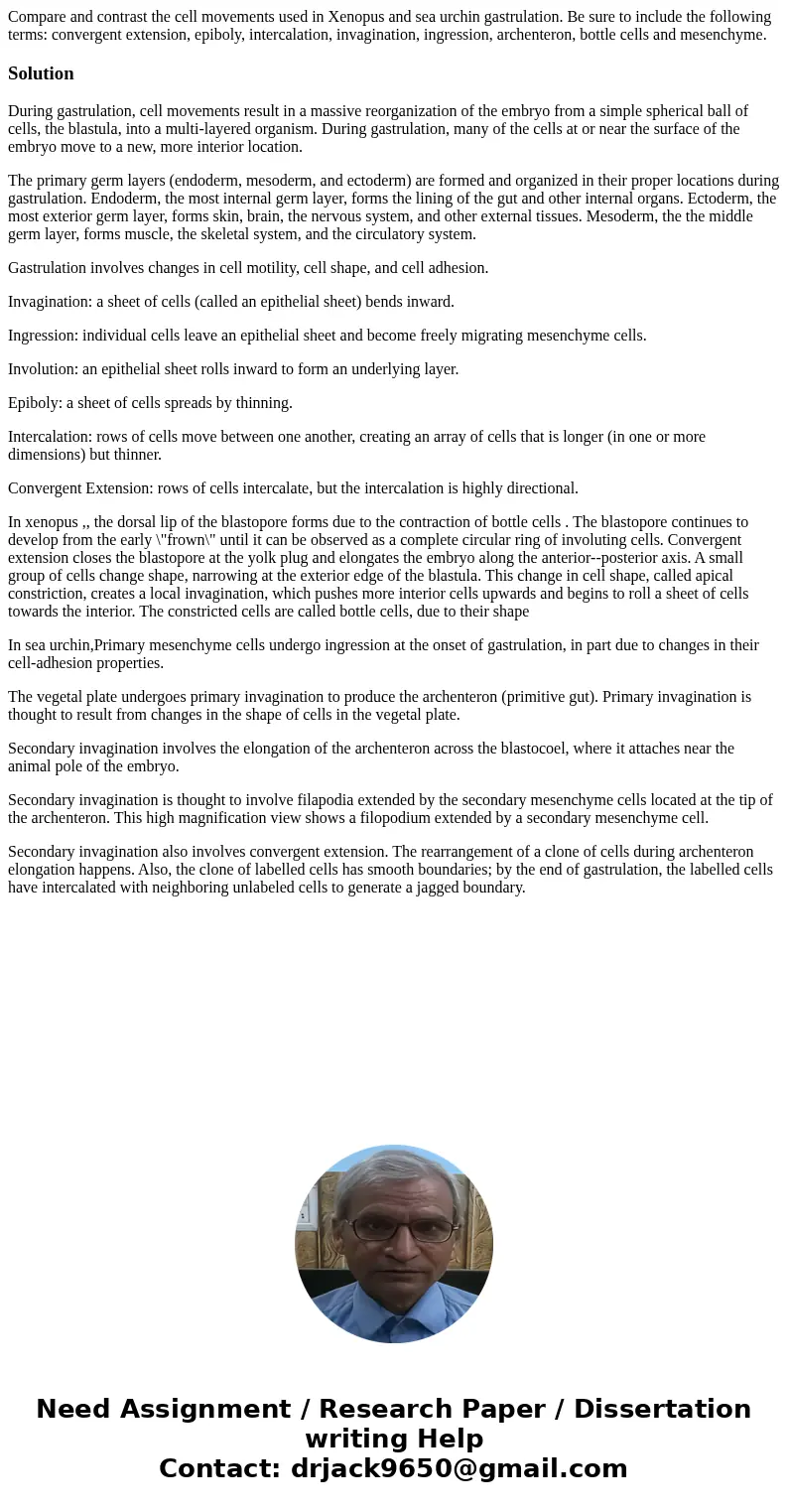Compare and contrast the cell movements used in Xenopus and
Compare and contrast the cell movements used in Xenopus and sea urchin gastrulation. Be sure to include the following terms: convergent extension, epiboly, intercalation, invagination, ingression, archenteron, bottle cells and mesenchyme.
Solution
During gastrulation, cell movements result in a massive reorganization of the embryo from a simple spherical ball of cells, the blastula, into a multi-layered organism. During gastrulation, many of the cells at or near the surface of the embryo move to a new, more interior location.
The primary germ layers (endoderm, mesoderm, and ectoderm) are formed and organized in their proper locations during gastrulation. Endoderm, the most internal germ layer, forms the lining of the gut and other internal organs. Ectoderm, the most exterior germ layer, forms skin, brain, the nervous system, and other external tissues. Mesoderm, the the middle germ layer, forms muscle, the skeletal system, and the circulatory system.
Gastrulation involves changes in cell motility, cell shape, and cell adhesion.
Invagination: a sheet of cells (called an epithelial sheet) bends inward.
Ingression: individual cells leave an epithelial sheet and become freely migrating mesenchyme cells.
Involution: an epithelial sheet rolls inward to form an underlying layer.
Epiboly: a sheet of cells spreads by thinning.
Intercalation: rows of cells move between one another, creating an array of cells that is longer (in one or more dimensions) but thinner.
Convergent Extension: rows of cells intercalate, but the intercalation is highly directional.
In xenopus ,, the dorsal lip of the blastopore forms due to the contraction of bottle cells . The blastopore continues to develop from the early \"frown\" until it can be observed as a complete circular ring of involuting cells. Convergent extension closes the blastopore at the yolk plug and elongates the embryo along the anterior--posterior axis. A small group of cells change shape, narrowing at the exterior edge of the blastula. This change in cell shape, called apical constriction, creates a local invagination, which pushes more interior cells upwards and begins to roll a sheet of cells towards the interior. The constricted cells are called bottle cells, due to their shape
In sea urchin,Primary mesenchyme cells undergo ingression at the onset of gastrulation, in part due to changes in their cell-adhesion properties.
The vegetal plate undergoes primary invagination to produce the archenteron (primitive gut). Primary invagination is thought to result from changes in the shape of cells in the vegetal plate.
Secondary invagination involves the elongation of the archenteron across the blastocoel, where it attaches near the animal pole of the embryo.
Secondary invagination is thought to involve filapodia extended by the secondary mesenchyme cells located at the tip of the archenteron. This high magnification view shows a filopodium extended by a secondary mesenchyme cell.
Secondary invagination also involves convergent extension. The rearrangement of a clone of cells during archenteron elongation happens. Also, the clone of labelled cells has smooth boundaries; by the end of gastrulation, the labelled cells have intercalated with neighboring unlabeled cells to generate a jagged boundary.

 Homework Sourse
Homework Sourse